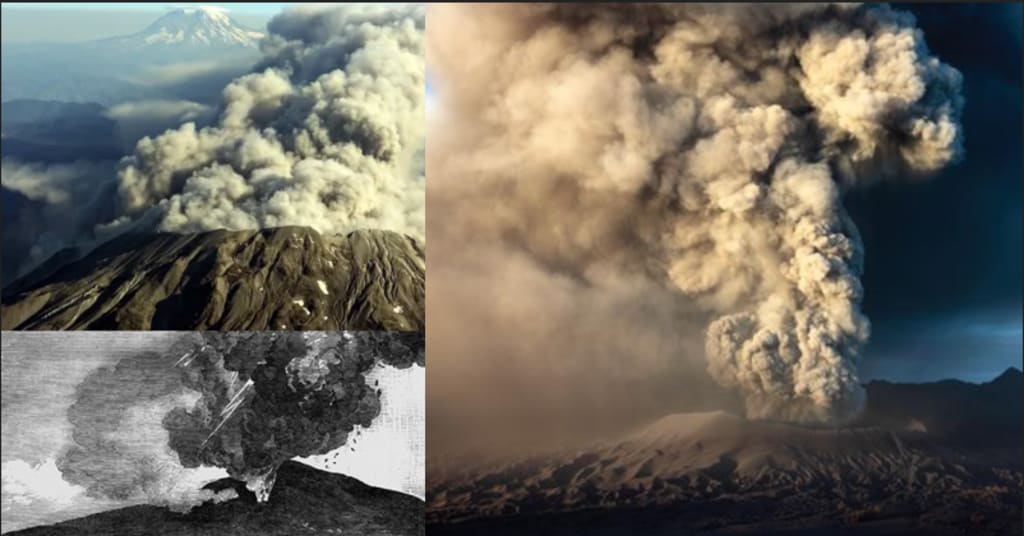The Blast That Shook The World: Eruption of Indonesia's Mount Tambora
The Story behind the "year without a summer"

Mount Tambora is a stratovolcano located on the island of Sumbawa in Indonesia. In the early 19th century, it was one of the tallest mountains in the region, standing at a height of 4,300 meters. However, on April 10, 1815, the world was shaken by what would become the largest volcanic eruption in recorded history.
Following the explosion, the mountain's maximum altitude decreased to 2,851 m, which is approximately 66% of its previous height.
Historical records indicate that Mount Tambora had been active for several months prior to the eruption. However, the intensity of the activity increased dramatically in the weeks leading up to April 10. On that day, the volcano erupted with a force that was felt as far as 1,200 kilometers away. The explosion was so violent that it was heard on the neighboring islands of Java and Sumatra, over 1,000 kilometers from the epicenter. Loud explosions were heard until the next evening, 11 April.
A Catastrophic Event of Unprecedented Proportions
The eruption of Mount Tambora was a catastrophic event of unprecedented proportions. The explosion was so powerful that it caused the mountain's summit to collapse, reducing its height by more than a kilometer.
The eruption produced an estimated 160-200 cubic kilometers of ash, rock, and pumice, which were thrown into the atmosphere.

The immediate aftermath of the eruption was devastating. The ash and debris from the volcano rained down on the surrounding area, burying entire villages and killing tens of thousands of people. T
he eruption also triggered a series of tsunamis, which caused further destruction along the coastline. The overall death toll from the eruption is estimated to be between 70,000 and 90,000, making it one of the deadliest volcanic eruptions in history.
Global Impact of Mount Tambora's Eruption
The eruption of Mount Tambora had far-reaching consequences that were felt around the world. The massive amount of ash and debris that was thrown into the atmosphere had a significant impact on the global climate.
The ash and dust particles reflected sunlight, causing a cooling effect on the Earth's surface. This led to a period of global cooling that lasted for several years, which was known as the "Year Without a Summer" in 1816.

The cooling effect of the eruption also had a significant impact on agriculture and food production. The cold temperatures and reduced sunlight led to crop failures and food shortages in many parts of the world. This, in turn, led to economic instability and social unrest in many countries.
The abnormal climate conditions during this period have been held responsible for the severity of typhus outbreaks in southeast Europe and along the eastern Mediterranean Sea from 1816 to 1819. The climate changes led to disruptions in the Indian monsoons and resulted in three unsuccessful harvests, leading to famine.

Additionally, the altered climate contributed to the spread of a new variant of cholera that originated in Bengal in 1816. Livestock in New England perished during the winter season of 1816-1817 due to cool temperatures and heavy rainfall.
The Welsh families were forced to seek food as refugees, and famine was widespread in north and southwest Ireland after the wheat, oat, and potato harvests failed.
Germany was particularly affected by the crisis, with a sharp rise in food prices and widespread demonstrations in front of grain markets and bakeries, followed by riots, arson, and looting in many European cities. It constituted the most severe famine of the 19th century.

Due to the abnormal climate conditions in 1816, the duration of the growing seasons in certain regions of Massachusetts and New Hampshire was less than 80 days, resulting in crop failures. Unusual sunsets were witnessed in Western Europe, and red fog was observed along the eastern coastline of the United States, leading to unique atmospheric conditions that lasted for approximately 2.5 years.
Mount Tambora continues to be an active volcano, with smaller eruptions occurring in 1880 and 1967. There have also been instances of increased seismic activity in recent years, with notable occurrences in 2011, 2012, and 2013.
About the Creator
Rare Stories
Our goal is to give you stories that will have you hooked.
This is an extension of the Quora space: Rare Stories
X(formerly Twitter): Scarce Stories
Official Bookstore: davidkellertruecrime
Writers:
....xoxo






Comments
There are no comments for this story
Be the first to respond and start the conversation.